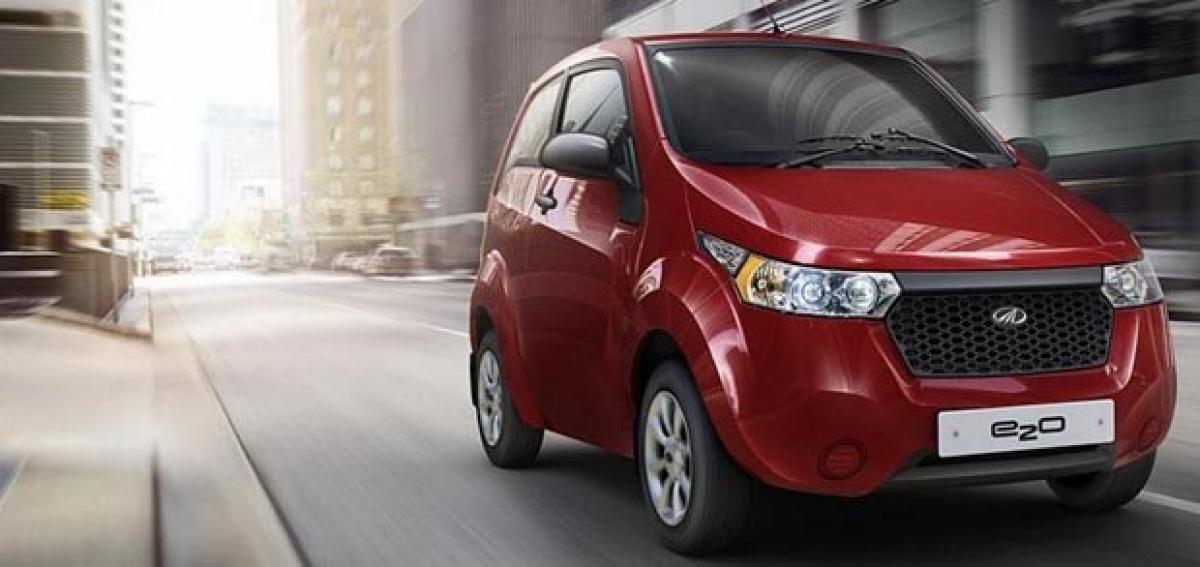Live
- Haryana CM takes dig at Punjab counterpart on setting up of new legislative Assembly
- Avvatar India and Spartan Race Kick Off India’s Ultimate Fitness Challenge in Bengaluru
- CM Revanth Reddy Pays Tribute to Guru Nanak on His Birth Anniversary
- ‘Matka’ clears censor: run-time locked
- ‘Kubera’ first glimpse looks interesting
- It took me 20 years to reach Sahnkar sir’s ears: Thaman S
- Gaurav Bhatia slams Congress for promising freebies to infiltrators in Jharkhand
- LIC’s entry into health insurance to significantly boost its market share
- Why Covid-19 Vaccine protection wanes over time?
- First Look of Kaliyugam 2064 Unveiled by Mani Ratnam Ahead of Worldwide Release
Just In
Union Government Plans to Boost Sale of Electric Vehicles in India


The Central Government has been taking a lot of initiatives to improve the sale of electric vehicles to reach a target of 6 million units by 2020.
The Central Government has been taking a lot of initiatives to improve the sale of electric vehicles to reach a target of 6 million units by 2020. As the first steps towards such a change, more number of charging points is proposed to be set up. The legal age required to ride electric vehicles will also be brought down by two years to just sixteen. Easy permits and easy credit will also be made available to improve sale of electric vehicles to substitute them as the main alternative to conventional vehicles.
While the Central Government has been taking efforts to increase sale of electric vehicles to millions, currently, electric vehicles get sold in mere thousands. Only 22,000 electric vehicle units have been sold last fiscal ending March 31, 2016, which is an increase of 37% from its previous fiscal. This is against the 20.46 million petrol, diesel and CNG vehicles sold last year.
E-Rickshaws and two wheelers constitute the majority of electric vehicles sold against cars or other four wheelers. The latter sold a mere 2,000 units. Mahindra & Mahindra, Hero Electric, Ashok Leyland and JBM Group are some of the pioneering early birds currently operating in the segment. Ashok Leyland and JBM Group have launched electric buses recently.
Diesel engines being the cause of higher environmental pollution are currently debated at the level of the apex court. Irrespective of the ongoing debate, electric vehicles, known to produce lower CO2 emissions by about 35-45% vis-à-vis gasoline vehicles, are planned for proliferation. The emissions from electric vehicles come from the production of electricity via coal, natural gas, oil, etc.
National Mission on Electric Mobility, approved by the Central Government in 2011, came up with the National Electric Mobility Mission Plan 2020 (NEMMP 2020), in 2013. The mission led the Department of Heavy Industries to come up with FAME (Faster Adoption and Manufacturing of (Hybrid &) Electric Vehicles) in India.
FAME will create the necessary technology, demand, pilot projects and charging infrastructure in the first phase between Fiscal Years 2016 and 2017, with an approved budget outlay of Rs. 795 crore. This scheme is expected to make hybrid and electric vehicles as the first choice for buyers to replace conventional vehicles to reduce the dependence on liquid fuel consumption. It could be hard for the government to achieve million unit sales from a few thousands by 2020, as ground level infrastructure has to be strengthened.
Credit facilities also will also be made more accessible for buyers of green vehicles to improve sales. Despite these challenges, the sales of electric vehicles are on the rise and are desired by the majority, if proper infrastructure and technology flood the market.
Credits: http://www.vicky.in/car/

© 2024 Hyderabad Media House Limited/The Hans India. All rights reserved. Powered by hocalwire.com






